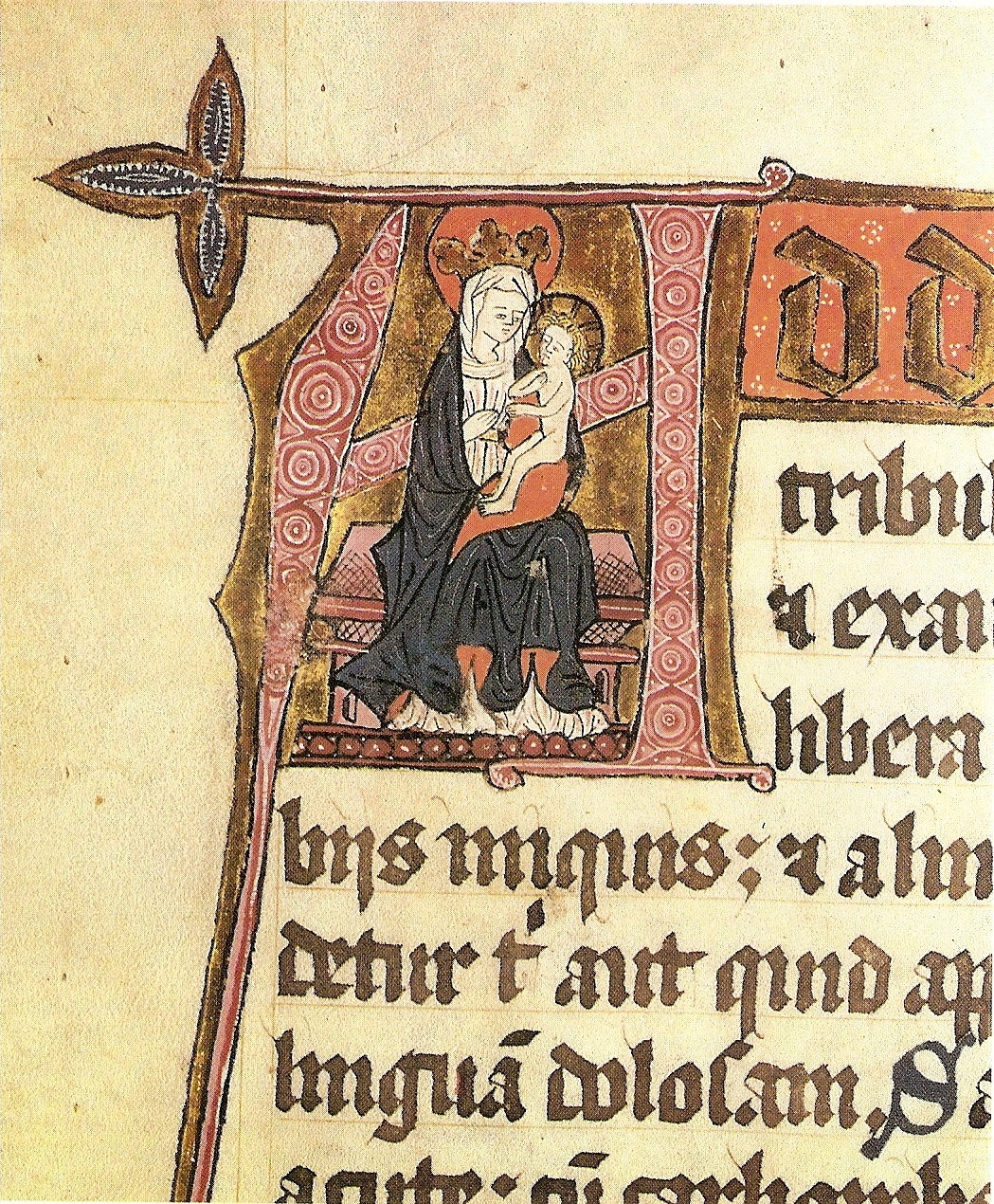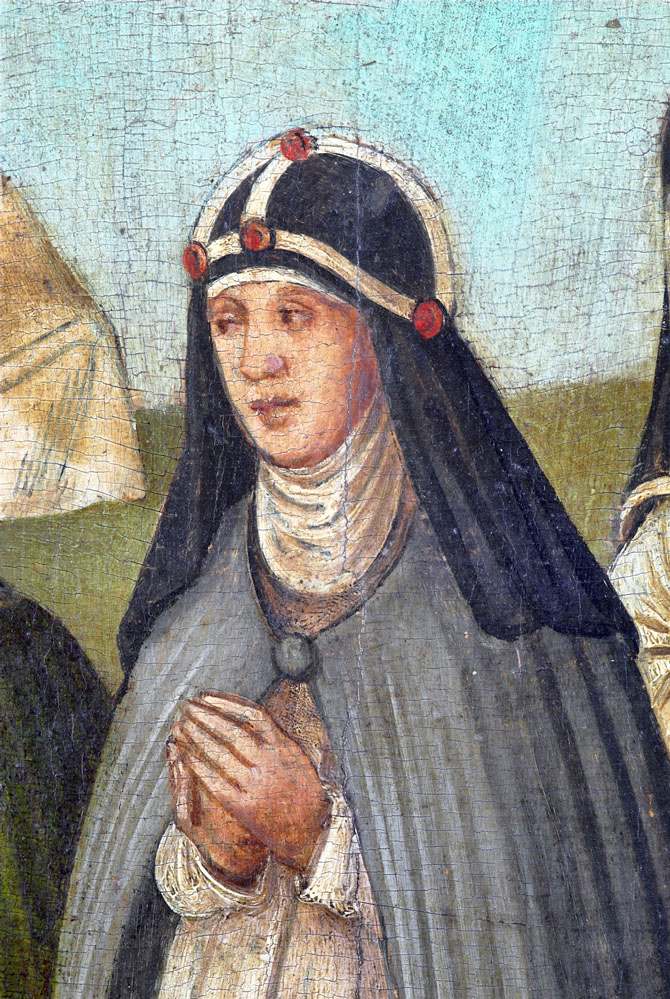|
Munkeliv Abbey
Munkeliv Abbey () was a Rule of St. Benedict, Benedictine abbey located at Nordnes in Bergen, Norway, Bergen, Norway. It was one of the oldest monasteries in Norway, and also one of the wealthiest and best-documented. There are no visible remains today. History Munkeliv Abbey was founded as a Benedictine abbey by King Eystein I of Norway (''Øystein 1 Magnusson'', reigned 1103– 1123) in about 1110 and was dedicated to Michael the Archangel, Saint Michael. The abbey was strategically positioned on the dominant height of Nordnes over the then newly established town of Bergen, with a view to encouraging the town's development. Its first centuries were successful and prosperous, but the arrival of the Black Death in the mid-14th century brought about a decline. In addition, the buildings suffered great damage in 1393 when the abbey was attacked by pirates known as the Victual Brothers (''vitaliebrødrene''). Thanks to its great wealth it managed to survive these catastrophes, but co ... [...More Info...] [...Related Items...] OR: [Wikipedia] [Google] [Baidu] |
Hovedøya Abbey
Hovedøya Abbey (''Hovedøya kloster'') was a medieval era Cistercian monastery on the island of Hovedøya in Oslofjord outside of Oslo, Norway. History The monastery was founded on 18 May 1147 by monks from Kirkstead Abbey in England on Hovedøya island, and dedicated to the Blessed Virgin Mary and Saint Edmund. A church dedicated to Edmund already stood on the island, and the monks took this over as the abbey church, modifying it to meet Cistercian requirements. The rest of the monastery follow a modified Cistercian building plan, to take into account a small local hill. The church itself is built in Romanesque style; the rest of the monastery was presumably Gothic. During the medieval period the abbey was one of the richest institutions in Norway, holding over 400 properties, including a fishery and timber yards. End of the abbey Political turmoil during the succession to the throne of Denmark-Norway led to the end of the monastery. The abbot, having supported the fo ... [...More Info...] [...Related Items...] OR: [Wikipedia] [Google] [Baidu] |
Christian Monasteries Established In The 1110s
A Christian () is a person who follows or adheres to Christianity, a Monotheism, monotheistic Abrahamic religion based on the life and teachings of Jesus in Christianity, Jesus Christ. Christians form the largest religious community in the world. The words ''Christ (title), Christ'' and ''Christian'' derive from the Koine Greek title (), a translation of the Biblical Hebrew term ''mashiach'' () (usually rendered as ''messiah'' in English). While there are diverse interpretations of Christianity which sometimes conflict, they are united in believing that Jesus has a unique significance. The term ''Christian'' used as an adjective is descriptive of anything associated with Christianity or Christian churches, or in a proverbial sense "all that is noble, and good, and Christ-like." According to a 2011 Pew Research Center survey, there were 2.3 billion Christians around the world, up from about 600 million in 1910. Today, about 37% of all Christians live in the Americas, about 26% ... [...More Info...] [...Related Items...] OR: [Wikipedia] [Google] [Baidu] |
16th-century Disestablishments In Norway
The 16th century began with the Julian year 1501 (represented by the Roman numerals MDI) and ended with either the Julian or the Gregorian year 1600 (MDC), depending on the reckoning used (the Gregorian calendar introduced a lapse of 10 days in October 1582). The Renaissance in Italy and Europe saw the emergence of important artists, authors and scientists, and led to the foundation of important subjects which include accounting and political science. Copernicus proposed the heliocentric universe, which was met with strong resistance, and Tycho Brahe refuted the theory of celestial spheres through observational measurement of the 1572 appearance of a Milky Way supernova. These events directly challenged the long-held notion of an immutable universe supported by Ptolemy and Aristotle, and led to major revolutions in astronomy and science. Galileo Galilei became a champion of the new sciences, invented the first thermometer and made substantial contributions in the fields of phy ... [...More Info...] [...Related Items...] OR: [Wikipedia] [Google] [Baidu] |
12th-century Establishments In Norway
1 (one, unit, unity) is a number, numeral, and glyph. It is the first and smallest positive integer of the infinite sequence of natural numbers. This fundamental property has led to its unique uses in other fields, ranging from science to sports, where it commonly denotes the first, leading, or top thing in a group. 1 is the unit of counting or measurement, a determiner for singular nouns, and a gender-neutral pronoun. Historically, the representation of 1 evolved from ancient Sumerian and Babylonian symbols to the modern Arabic numeral. In mathematics, 1 is the multiplicative identity, meaning that any number multiplied by 1 equals the same number. 1 is by convention not considered a prime number. In digital technology, 1 represents the "on" state in binary code, the foundation of computing. Philosophically, 1 symbolizes the ultimate reality or source of existence in various traditions. In mathematics The number 1 is the first natural number after 0. Each natural number, ... [...More Info...] [...Related Items...] OR: [Wikipedia] [Google] [Baidu] |
1110 Establishments In Europe
111 may refer to: *111 (number) *111 BC * AD 111 *111 (Australian TV channel), a TV channel now called Fox Funny *111 (emergency telephone number), the emergency telephone number in New Zealand *NHS 111, a free-to-call non-emergency medical helpline in the UK *(111) a Miller index for the crystal face plane formed by cutting off the corner equally along each axis *111 Ate, a main-belt asteroid Transport * Swissair Flight 111, was a scheduled international passenger flight from John F. Kennedy International Airport in New York City, United States, to Cointrin Airport in Geneva, Switzerland *111 (MBTA bus), a bus route operated by Massachusetts Bay Transportation Authority *111 (New Jersey bus), a bus route operated by New Jersey Bus *Tatra 111, a heavy truck manufactured by Tatra Music * ''111'' (Her Majesty & the Wolves album) * ''111'' (Željko Joksimović album) * ''111'' (Pabllo Vittar album) See also *III (other) *List of highways numbered 111 *1/11 (disambiguation ... [...More Info...] [...Related Items...] OR: [Wikipedia] [Google] [Baidu] |
Christian Monasteries In Bergen
A Christian () is a person who follows or adheres to Christianity, a monotheistic Abrahamic religion based on the life and teachings of Jesus Christ. Christians form the largest religious community in the world. The words ''Christ'' and ''Christian'' derive from the Koine Greek title (), a translation of the Biblical Hebrew term ''mashiach'' () (usually rendered as ''messiah'' in English). While there are diverse interpretations of Christianity which sometimes conflict, they are united in believing that Jesus has a unique significance. The term ''Christian'' used as an adjective is descriptive of anything associated with Christianity or Christian churches, or in a proverbial sense "all that is noble, and good, and Christ-like." According to a 2011 Pew Research Center survey, there were 2.3 billion Christians around the world, up from about 600 million in 1910. Today, about 37% of all Christians live in the Americas, about 26% live in Europe, 24% live in sub-Saharan Africa, ab ... [...More Info...] [...Related Items...] OR: [Wikipedia] [Google] [Baidu] |
Bridgettine Monasteries In Norway
The Bridgettines, or Birgittines, formally known as the Order of the Most Holy Saviour (; abbreviated OSsS), is a monastic religious order of the Catholic Church founded by Saint Birgitta (Bridget of Sweden) in 1344 and approved by Pope Urban V in 1370. They follow the Rule of Saint Augustine. There are today several different branches of Bridgettines. History The first monastery of the order was founded in 1369 at the former royal castle of Vadstena. St. Bridget's granddaughter, Lady Ingegerd Knutsdotter, was Abbess of Vadstena from 1385 to 1403. Upon her death on 14 September 1412, direct descent from St. Bridget became extinct. This opened the medieval concept of "Bridget's spiritual children", members of the order founded by her, to be her true heirs. The order spread widely in Sweden and Norway, and played a remarkable part in promoting culture and literature in Scandinavia; this is to be attributed to the fact that the motherhouse at Vadstena, by Lake Vättern, was not su ... [...More Info...] [...Related Items...] OR: [Wikipedia] [Google] [Baidu] |
Nicolay Nicolaysen
Nicolay Nicolaysen (14 January 1817 - 22 January 1911) was a Norway, Norwegian Archaeology, archaeologist and Norway's first state employed antiquarian. He is perhaps best known for his excavations of the ship burial at Gokstad ship burial, Gokstad in 1880. Nicolay Nicolaysen ''Norsk biografisk leksikon'' Biography Nicolay Nicolaysen was born in Bergen to merchant and bank administrator Lyder Wentzel Nicolaysen (1794–1876) and Sophia Susanna Siewers (1797–1826). He was the half-brother of professor of medicine Julius Nicolaysen (1831–1909). Nicolaysen graduated from the University of Christiania now (University of Oslo) and became cand.jur. in 1841. In 1845 he was employed as a copyist in the Ministry of Audit and in 1858 an assistant at the National Archives (''Riksarkivet''). < ...[...More Info...] [...Related Items...] OR: [Wikipedia] [Google] [Baidu] |
Bergen Museum
The University Museum of Bergen () is a university museum in Bergen, Norway. The museum features material related to anthropology, archaeology, botany, geology, zoology, art, and cultural history. History The University Museum of Bergen was founded in 1825 by Wilhelm Frimann Koren Christie, at the time president of the Storting. Founded under the name University Museum of Bergen with the intent of building large collections in the fields of culture and natural history, it became the grounds for most of the academic activity in the city, a tradition which has prevailed since the museum became part of the University of Bergen. The University Museum of Bergen is divided into two departments, the Natural History Collections and the Cultural History Collections and Public Outreach and exhibitions. It is also the caretaker of the museum garden, formerly the botanical garden, surrounding the natural history building, and the city's arboretum. This was the first dedicated museum build ... [...More Info...] [...Related Items...] OR: [Wikipedia] [Google] [Baidu] |
Puddefjord
Puddefjorden, often anglicized as Pudde Fjord,Koop, Gerhard, Klaus-Peter Schmolke. 2014. ''German Light Cruisers of World War II: Warships of the Kriegsmarine''. Barnsley, UK: Seaforth, p. 83. is an inlet or fjord in the central part of the city of Bergen in Vestland county, Norway. An arm off of the main Byfjorden, the Puddefjorden is long and stretches from the tip of the Nordnes peninsula to the Solheimsviken bay at the entrance to the Store Lungegårdsvannet bay. The fjord is at its widest, between Nordnes and the inner part of the borough of Laksevåg. The innermost part of the fjord, known as Damsgårdssundet, is much narrower, scarcely wide at its narrowest. The fjord is located next to some of Bergen's most important industrial areas, and has played a significant part in the city's development and industrialisation. History Despite being situated in the central part of the present-day city of Bergen, the Puddefjorden did not play a major role in the city's early histo ... [...More Info...] [...Related Items...] OR: [Wikipedia] [Google] [Baidu] |
Bishop Of Bergen
The Catholic Diocese of Bergen or Diocese of Bjørgvin in Norway existed from the eleventh century to the Protestant Reformation (1537),"Diocese of Bjørgvin (Bergen)" ''''. David M. Cheney. Retrieved February 29, 2016"Titular Episcopal See of Selia" ''GCatholic.org''. Gabriel Chow. Retrieved February 29, 2016 and included the (modern) counties of |





